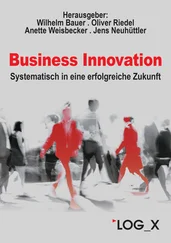Despite some variations, both the Italian and French studies agree that the unit of analysis is not the enterprise, but the “district” as a whole, with interconnected firms (Brusco 1990). The focus has thus shifted from the enterprise itself to the space around it.
1.1.3. The rise of districts: the end of the Fordist enterprise?
Some authors see the sign of a more general economic change in the organization of industrial districts, in which Fordist mass production gives way to the industrial development of flexible specialization. This observation is mainly defended by regulationist economists (Boyer, Aglietta, Saillard, Coriat, etc.), who consider the accumulation regime concept as a tendency inherent to the capitalist mode of production, and which corresponds to regularities ensuring a general and relatively coherent progression of capital accumulation. These regularities operate within institutions that govern, among other things, competition, money, wage relations, etc. Depending on the place and the period, these institutional configurations may change. The Fordist mode of regulation articulated macroeconomic regularities on an international scale, while at the same time being subject to national compromises (Boyer and Saillard 2002). During the intense period of Fordism, the national scale was considered the relevant level of accumulation.
However, this economic and social regulation, which was being carried out within large enterprises, is no longer appropriate. Indeed, the crisis of Fordism is reflected in a crisis of territory at the level of the nation state (caused by a triple movement of tertiarization, deregulation and globalization) and a crisis of legitimacy of the welfare state with the emergence of mass unemployment (Carré and Levratto 2011, p. 360). In this context of capital internationalization and the crisis of the state, institutional arrangements are regional (EU, NAFTA) and international (WTO, for example), rather than solely national. In France, some authors see a disappearance of the Colbertist state (Mustar and Laredo 2002) and the emergence of new public actors, such as Europe and local authorities. As a result, the new post-Fordist regulations would be posed jointly in terms of sector and territory (Laurent and Du Tertre 2008). This approach is in line with theories that consider that a new geography of flexible accumulation is emerging in reaction to the Fordist mode of accumulation (Storper and Scott 1990). In a seminal work, Michael Piore and Charles Sabel (1986) develop the concept of flexible specialization as an alternative model to Fordist mass production, based on the emergence of local industrial models, notably the Italian districts (Hirst and Zeitlin 1992). Industrialization with flexible specialization is understood to be:
A form of production based on individual initiatives or on those of small enterprises that will work together to build, through rather complex and informal transactional systems, products intended for the market (consumer products or production components) […]. This specialization in a segment favors flexibility in the production of the components and elements of the final product, which in turn leads to greater flexibility in the overall network of enterprises, which is then likely to offer a wide range of products to the market (Durand 1991, p. 48).
These SMEs, each specialized in a different segment of production, constitute a system that adapts to technological developments. For some authors, this specialization comes at a time of crisis for the mass consumption model: the rise of individualism leads the consumer to no longer want uniform goods (Capecchi et al . 1987). The weakening of these standardized goods markets has disrupted the large Fordist enterprises, the symbol of which being the automobile industry. Slow growth marked by weak demand would have determined the “shift of centrality” from large industry to small production units considered more flexible and more responsive to demand surges (Vercellone 2003). On the other hand, others consider that it is more a question of an entrepreneurial thrust that sought to express itself outside the conditions of domination of big business. Unable to compete on the basis of production costs, new production models were invented, based on product diversification (Durand 1991). Some observers agree that this post-Fordist bifurcation is embodied in the shift from an economy of quantity to an economy of variety, under the pressure of the relaxing of borders and increased competition (Veltz 1996). Hatchuel refers to this as a “Taylorism of variety” (Hatchuel et al . 2002, p. 32). Moreover, the flexible specialization model combines the advantages of the large enterprise (economies of scale) and those of the small business (productive flexibility), allowing for a better capacity for innovation (Garofoli 1992).
Literature on the district, and its variants, analyzes spatial concentrations of businesses that have formed on their own, based on family or neighborhood ties, or even with the aim of integrating the production chain of a territory. In this sense, Bagnasco evokes a “spontaneous social capital” specific to the Italian district 1, that is, “accumulated over the course of history within networks that define local society” (Novarina 2012, p. 21). He contrasts it with the “created social capital” that public authorities try to reproduce. Indeed, while the models we have just seen are the result of local initiatives, the spatial concentrations intended to rapidly bring science and industry together are the result of public policies, whether they be French technopoles or American science parks.
1.2. Spatial concentrations of technological activities
The second half of the 20th century brought about, on the academic side, mainly economic concepts of territorial innovation systems, as well as several policies promoting the bringing together of science and industry at a local level.
1.2.1. The time of technopoles: reconciling regional planning and innovation
In France, the technopole concept was part of the vast policy of decentralization that began in the 1950s and continued until the decentralization acts of the 1980s. The first attempts to create technopoles emerged in the 1970s, as in the case of the Meylan innovation and scientific and technical research zone ( Zone d’Innovation et de Recherche Scientifique et Technique , ZIRST) in the Grenoble area and, especially, Sophia Antipolis near Nice, which remains the most striking French example. However, it was during the following decade that technology parks appeared all over France:
Following the decentralization of 1982, the idea that development and coordination actions can promote the constitution of technological poles, and thus the economic development of cities or regions, spread among local elected officials, who were strongly encouraged in this by companies specialized in the development of business parks (Grossetti 1995, p. 3).
The state became involved in this development, initially through DATAR ( Délégation interministérielle à l’aménagement du territoire et à l’attractivité régionale ), and then gradually a multitude of operators emerged: mixed syndicates, associations, mixed economy companies, etc. As a result, in the 1990s, several works on technopoles were published, in an attempt to decipher the phenomenon and categorize the various experiments that were flourishing in France and abroad. For Jean-Yves Faberon, the emergence of technopoles in France is at the crossroads of three different policies (Faberon 1990): first, a regional planning policy (metropolises, new towns, conversion clusters and growth clusters resulting from the Guichard Report of 1986); second, an innovation and research policy (including the July 15, 1982, act aiming to develop regional technology clusters in which research and the socio-economic world are decompartmentalized for the development of technologies) and finally, a decentralization policy promoting the emergence of regional technology clusters. The state is thus strongly committed to the development of these work and production spaces, convinced by the concept of cross-fertilization (Savall and Zardet 2005). In La fièvre des technopoles , Jacques de Certaines (Certaines 1988, p. 28) identifies three types of technology clusters. First, desaturation clusters aiming to relieve metropolitan congestion: in France, Sophia Antipolis falls into this category; in the United States, Route 128 comes to mind in relation to MIT (Massachusetts Institute of Technology) and in Japan, Tsukuba in the suburbs of Tokyo. Second, conversion clusters operate in areas that have undergone major crises, for example, in the former mining basins of northern and eastern France, such as Meylan-Grenoble, Nancy-Brabois or Metz 2000. Finally, Jacques de Certaines observes a third type of technopole: development clusters as a deliberate strategy for developing a region through territorial anchoring of cutting-edge technologies (he cites the examples of Montpellier Languedoc-Roussillon Technopole and Rennes Atalante).
Читать дальше












